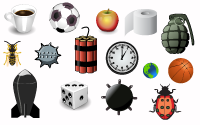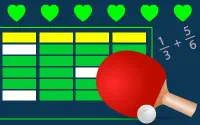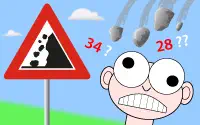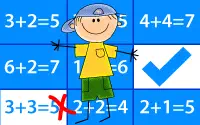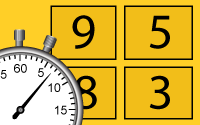


Decimal numbers: ascending
for 3rd grade
Choose the correct ascending order for these lists of 4 decimal numbers
Home / 3rd grade / Comparing numbers / Order decimal numbers / Decimal numbers: ascending
Order decimal numbers in ascending order (from smallest to largest)
To arrange decimal numbers in ascending order you need to know 2 things:
Decimal numbers
A decimal number has two parts: the whole number part and the decimal part. The whole number part comes before the decimal point, and the decimal part comes after it. For example, in the number 5.32, the whole number part is 5, and the decimal part is 32.
Ascending order
To arrange numbers in ascending order is to arrange the numbers from smallest on the left to biggest on the right. In ascending order, the numbers 3, 2, 4, 1 are 1, 2, 3, 4.
To arrange decimal numbers in ascending order, follow these steps.
Step 1: Compare the whole numbers first. When you're trying to arrange decimal numbers, start by comparing their whole number parts. The smaller the whole number, the smaller the decimal number. For example, 2.5 is smaller than 3.2 because 2 is smaller than 3.
Step 2: Compare decimal parts if the whole numbers are equal. If two decimal numbers have the same whole number part, then you need to compare their decimal parts. Look at each digit in the decimal part, starting from the left, and compare them. The smaller the digit, the smaller the decimal number.
For example, let's compare 4.21 and 4.15: The first digits are 2 (from 4.21) and 1 (from 4.15). Since 1 is smaller than 2, 4.15 is smaller than 4.21 even though it's second digit is bigger.
Let's arrange these numbers in ascending order: 3.6, 1.8, 3.45, 1.15, 2.2.
First, arrange them by whole number parts: 1.8, 1.15, 2.2, 3.6, 3.45.
Now, compare the decimal parts of numbers with the same whole number part: 1.15 is smaller than 1.8, and 3.45 is smaller than 3.6.
The final ascending order is: 1.15, 1.8, 2.2, 3.45, 3.6.
Below is a table showing the first 6 question answer pairs for the topic "Decimal numbers: ascending" as used in the lessons for this topic. Our games and tests for the topic use these 6 items plus 10 additional question answer pairs.
The topic "Decimal numbers: ascending" is in the category Comparing numbers for 3rd grade (ages 8 to 9).
Revise 'Decimal numbers: ascending' with one of our games for 3rd grade
Home / 3rd grade / Comparing numbers / Order decimal numbers / Decimal numbers: ascending
Each of our math topics for elementary are made up of between 6 and 20 question and answer pairs (both the written form and a robot voice speaking those questions and answers). Each topic can be used with all the activities on the site.
Counting * Comparing numbers * Pattern * Place value * Addition * Subtraction * Add + Subtract * Multiplication * Division * Multiply + Divide * Fractions * Measurements * Shapes * Position + Direction * Statistics * Algebra *

